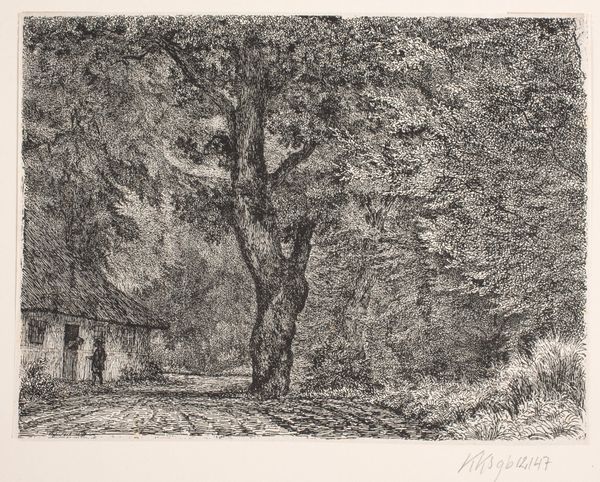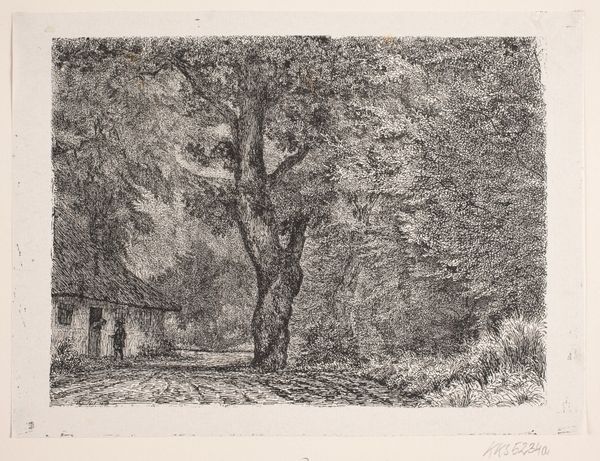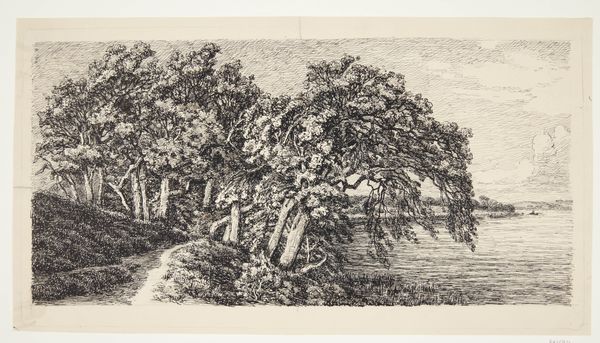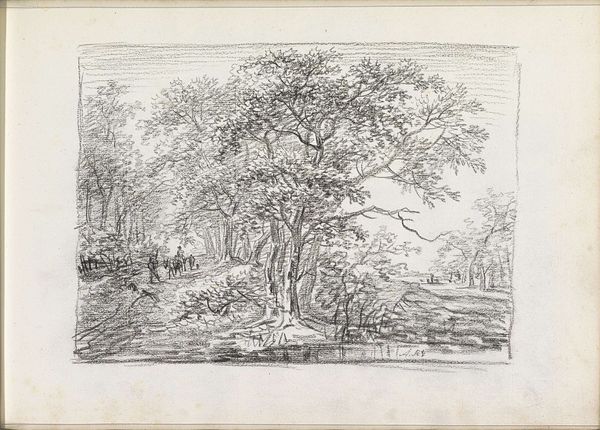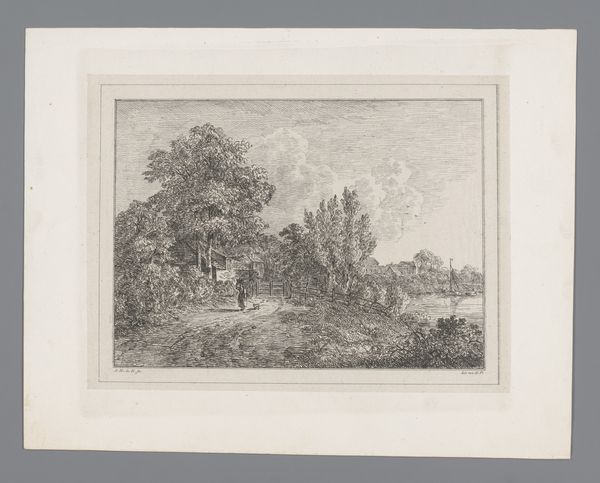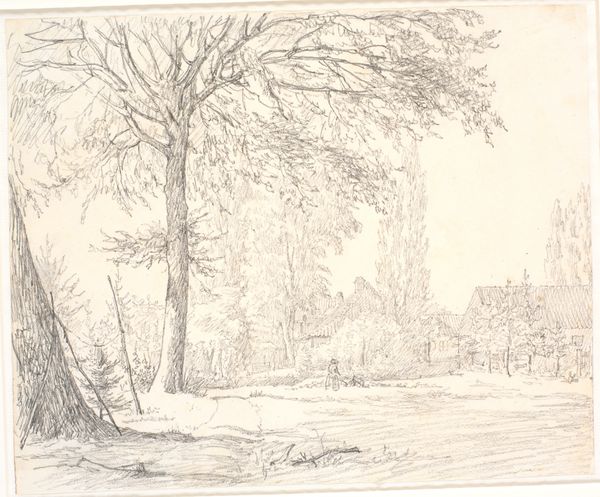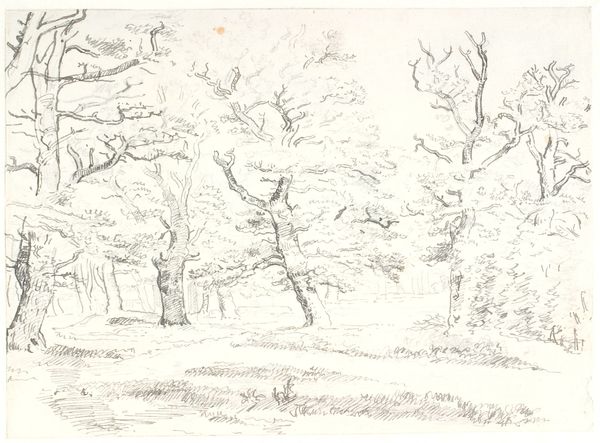
drawing, print, etching, ink
#
drawing
#
ink painting
# print
#
etching
#
landscape
#
etching
#
ink
#
realism
Dimensions: 161 mm (height) x 218 mm (width) (bladmaal)
Curator: Before us is "Huset i skoven," or "The House in the Woods," an etching by Vilhelm Kyhn, created in 1849. It's a classic Danish landscape. Editor: My first impression is of stillness and seclusion. There's a humble beauty in the composition. The house almost hides behind the imposing tree, but it still commands attention. Curator: Kyhn was instrumental in shaping the Danish national identity through his art, emphasizing rural motifs at a time of growing urbanization and social change. These weren't just landscapes; they were statements about cultural heritage. Editor: The single, massive tree definitely anchors the whole piece symbolically, doesn’t it? It's a near-universal emblem of strength, longevity, a sort of steadfast guardian of the humble dwelling. Almost evokes ideas about folklore and fairy tales. Curator: Exactly. And its position isn’t accidental; placing the tree in the foreground draws the eye and frames the rustic house, almost making it sacred. Kyhn participated actively in the institutional formation of Danish art too, promoting landscape painting through his teaching positions and exhibition participation. Editor: Do you think the figure in front of the house adds much meaning? It is slightly obscured. Is it the artist himself perhaps? Curator: Good eye. Some have speculated that. That the solitary figure can represent an idealized connection to the land, representing harmony between humans and nature. Others see a societal link because this idyllic scene was becoming rarer because of migration to towns and factories. Editor: I see the broader historical themes, but on an individual level, it strikes me as profoundly comforting, this sheltered, slightly mystical vision. A dreamscape removed from worldly issues. Curator: It is an idealized rendering. These works played a part in shaping what Danes aspired to perceive when looking at the rural environment, and helped to create a cultural touchstone of the "good old days" of rural community and agrarian identity. Editor: Very insightful! Seeing this today certainly feels like connecting with such a constructed, shared past. Curator: Yes. Analyzing how a work like this operates in constructing such memories allows us to think more critically about national identity formation.
Comments
No comments
Be the first to comment and join the conversation on the ultimate creative platform.
